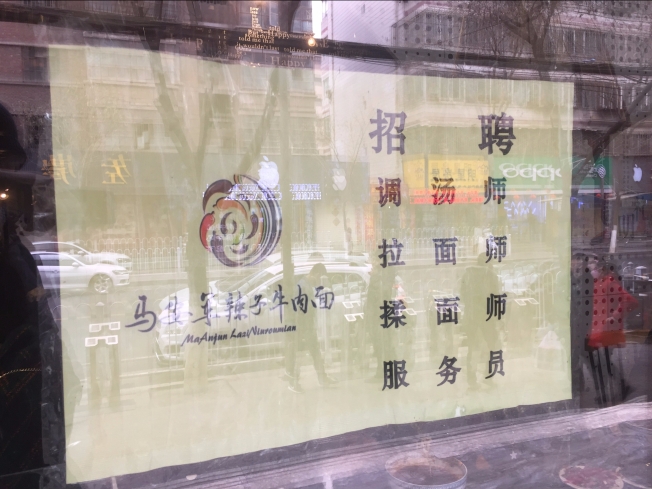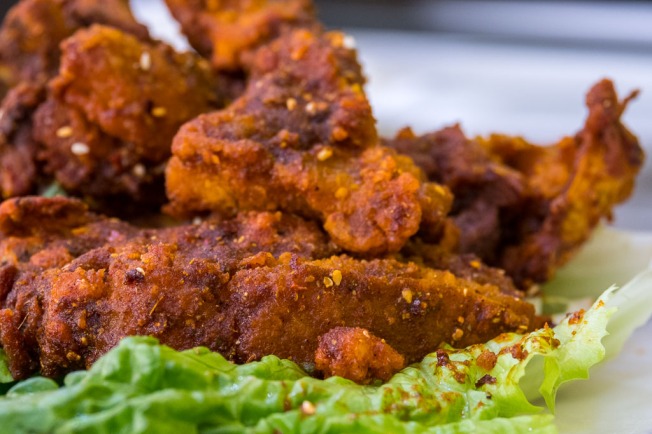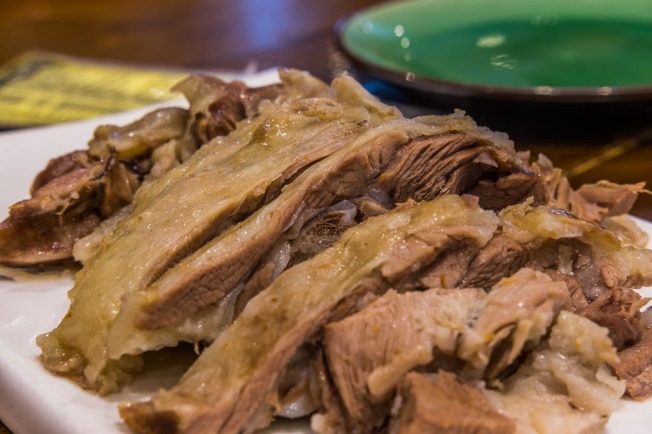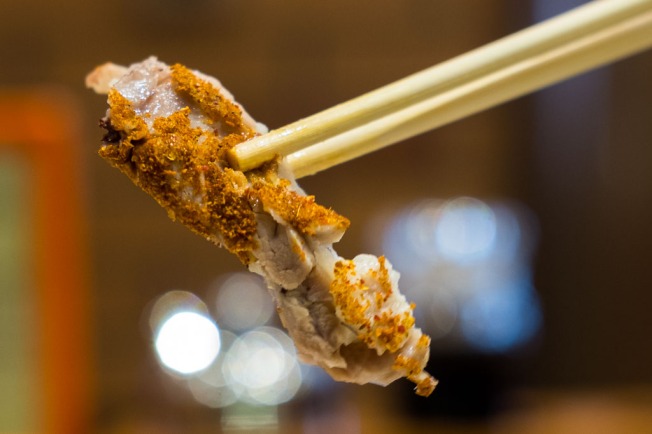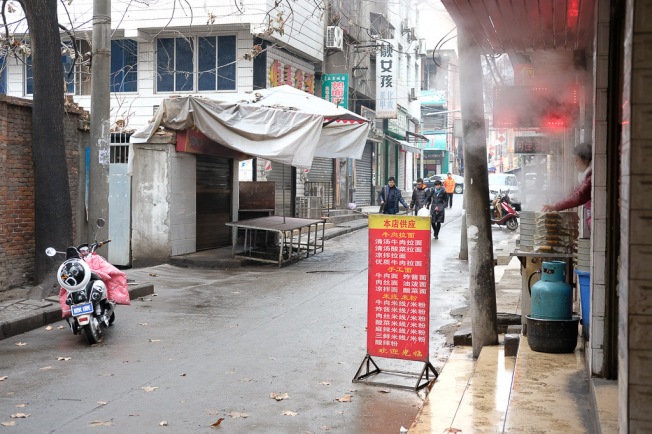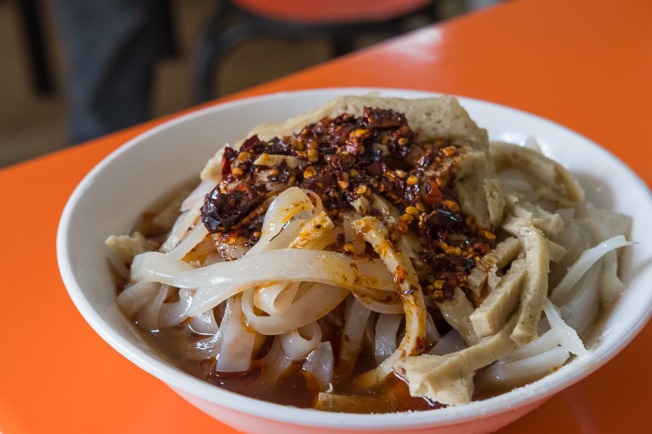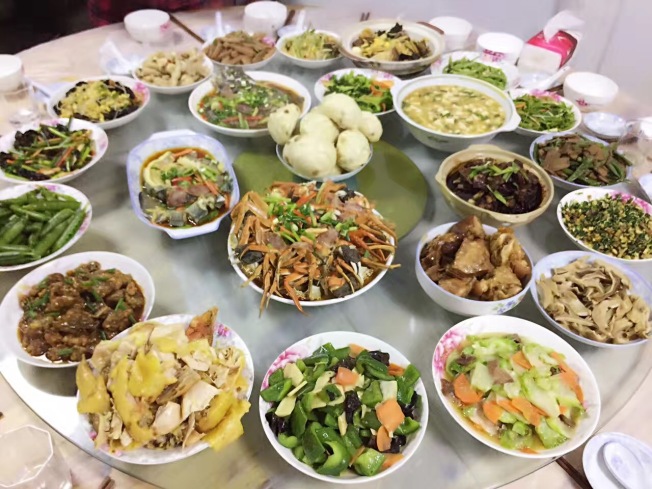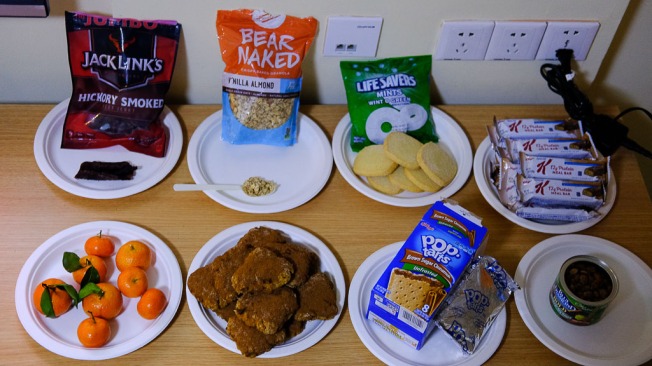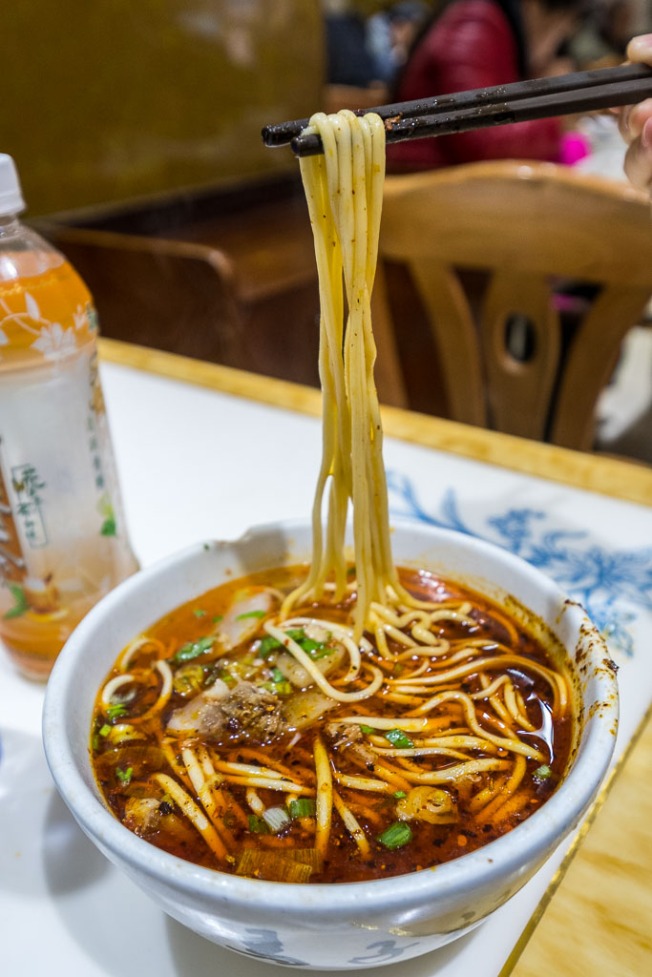
A noodle bowl from the grand old Ma Zi Lv Noodles
The star attraction of my Chinese New Year travels this year was the city of Lanzhou and its dazzling, underappreciated food scene.
Lanzhou’s signature is beef noodles, and its synonymous with that dish in a way that rivals Philadelphia’s association with cheese steaks. I could tell how serious the city was the moment I stepped off the bus and was struck by a whiff of savory broth wafting from one of the city’s thousand-plus noodle joints. The only other Chinese city I’ve experienced whose streets literally smelled like its signature food was Chengdu – surely it’s a good sign that Lanzhou keeps such rarefied company as the capital of Sichuan cuisine!
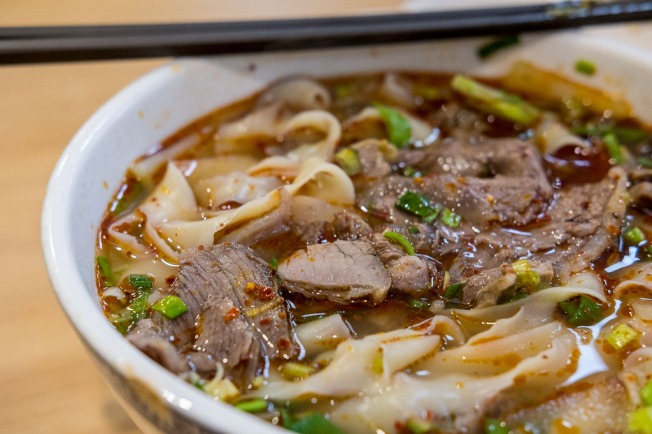
Thick noodles from Jinqiang Beef Noodles – noodles done fast food style
Lanzhou beef noodles are simple in their fundamentals and complicated in execution. Nearly every place I visited served steaming bowls with the same basic elements: fresh broth, hand-pulled wheat noodles, crunchy slices of white Chinese radish, green leaves of coriander and sliced scallions, diced stewed beef, and a hit of crimson pepper oil.
From these basics has spiraled a dizzying culture of refinement and experimentation, and there are multiple old standby restaurants serving classic noodles that compete with fast food noodle chains working economies of scale. And for every bustling noodle joint with a sign touting its origin story and decades of filling Lanzhou people’s bellies (see image below), there seems to be a newer modern noodle bars that let Lanzhou’s yuppie class enjoy beef noodles surrounded by fashion-forward decor.
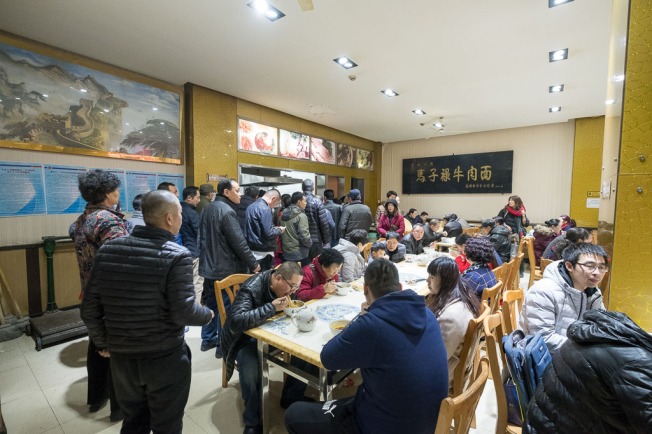
Breakfast time at Ma Zi Lv Beef Noodles
I was only in Lanzhou for five days. I had beef noodles for breakfast every day and more than once for dessert or a midnight snack, and still didn’t even scratch the surface. The city takes beef noodles so seriously, it reminds me of how Chinese folks themselves can be dumbfounded by the amount of passion and variety Americans can find in the humble hamburger. And aren’t beef noodles and burgers pretty much the same, when you get right down to it? They’re just vessels for conveying flour, beef, and some seasonings into our stomachs. Whoa. I think I just made myself like beef noodles even more.
So far as I can tell, beef noodle customers have just a couple of customization options.
- One is whether they want to add a few extra slices of stewed beef.
- Another is how much spicy oil they want, which they can tell directly to the server as he loads up their bowl with all the fixings.
- Most important is the preferred thickness of the noodles, terms for which are common knowledge in Lanzhou and usually aren’t printed anywhere. There are two or three ‘levels’ of thin noodles, followed by a super thin variety called “hair thin”. Then there are thick noodles, which range from basic “thick” to as flat and thin as a “belt”. There may be more.

“Thick” noodles
At the end I decided I preferred “thin level two”, which others assured me was the most popular – as well as the option most servers default to when dealing with clueless foreigners.
